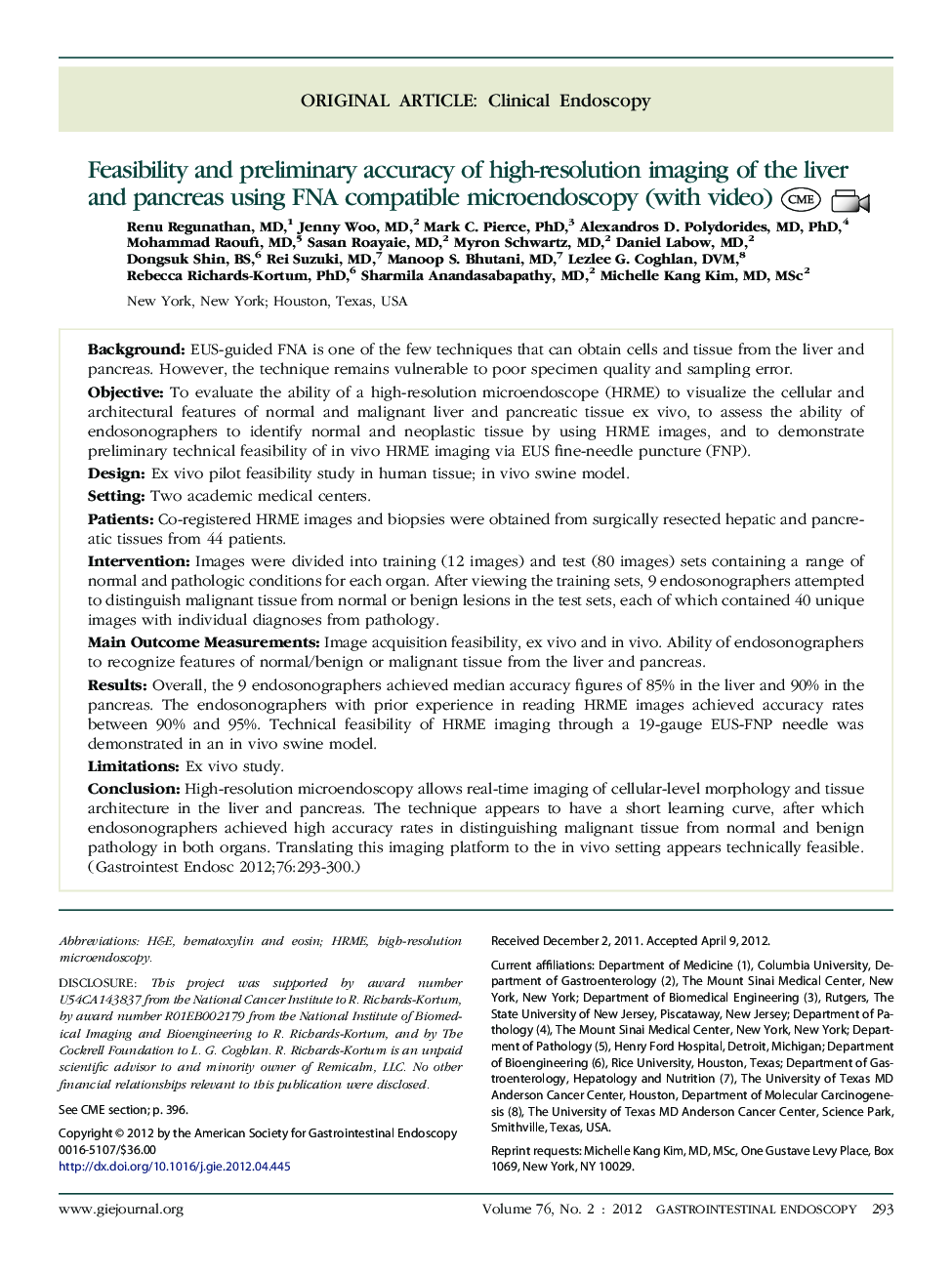| Article ID | Journal | Published Year | Pages | File Type |
|---|---|---|---|---|
| 3304822 | Gastrointestinal Endoscopy | 2012 | 8 Pages |
BackgroundEUS-guided FNA is one of the few techniques that can obtain cells and tissue from the liver and pancreas. However, the technique remains vulnerable to poor specimen quality and sampling error.ObjectiveTo evaluate the ability of a high-resolution microendoscope (HRME) to visualize the cellular and architectural features of normal and malignant liver and pancreatic tissue ex vivo, to assess the ability of endosonographers to identify normal and neoplastic tissue by using HRME images, and to demonstrate preliminary technical feasibility of in vivo HRME imaging via EUS fine-needle puncture (FNP).DesignEx vivo pilot feasibility study in human tissue; in vivo swine model.SettingTwo academic medical centers.PatientsCo-registered HRME images and biopsies were obtained from surgically resected hepatic and pancreatic tissues from 44 patients.InterventionImages were divided into training (12 images) and test (80 images) sets containing a range of normal and pathologic conditions for each organ. After viewing the training sets, 9 endosonographers attempted to distinguish malignant tissue from normal or benign lesions in the test sets, each of which contained 40 unique images with individual diagnoses from pathology.Main Outcome MeasurementsImage acquisition feasibility, ex vivo and in vivo. Ability of endosonographers to recognize features of normal/benign or malignant tissue from the liver and pancreas.ResultsOverall, the 9 endosonographers achieved median accuracy figures of 85% in the liver and 90% in the pancreas. The endosonographers with prior experience in reading HRME images achieved accuracy rates between 90% and 95%. Technical feasibility of HRME imaging through a 19-gauge EUS-FNP needle was demonstrated in an in vivo swine model.LimitationsEx vivo study.ConclusionHigh-resolution microendoscopy allows real-time imaging of cellular-level morphology and tissue architecture in the liver and pancreas. The technique appears to have a short learning curve, after which endosonographers achieved high accuracy rates in distinguishing malignant tissue from normal and benign pathology in both organs. Translating this imaging platform to the in vivo setting appears technically feasible.
